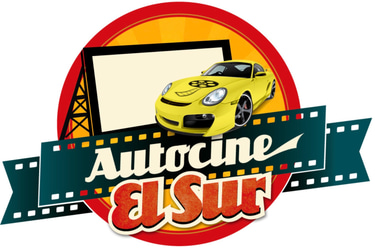Leonardo Valenti
Descripción de la While getting ready for a date with the girl of his dreams, Marco is visited by a man in the TV who starts talking to him. And he has a request to make... Hallucination or reality? That’s what Marco will have to figure out in this absurd and slapstick comedy.publicación.
9/15/20254 min read


1) How did the initial idea for this project come about?
Answer: It came about in 1997 from a very simple (and very urgent) desire to make a film with nothing: one S‑VHS camera, two VCRs for editing, four locations, and two friends. I was immersed in the late‑’90s DIY wave—Linklater (Slacker), Rodriguez (El Mariachi), and above all Kevin Smith (Clerks)—which gave me the nerve to try. The title Te L(e)o Comando / TV Man plays on telecomando (“remote control”): a small, surreal comedy about our relationship with the medias and the creative energy of friendship.
2) What was the biggest challenge in bringing your vision to the screen?
Answer: Back then: zero budget, tight schedule, no “real” crew, permits grabbed on the fly. Today: bringing it back after 28 years from a surviving copy and finding it a context—festivals, audience, conversations—without betraying its DIY nature.
3) Could you explain your creative process, from concept to final cut? For example, some directors use a lot of references, others are inspired by other art forms, or directors who improvise a lot.
Answer: My idea → a brief outline developed with Fabio and Marco → a beat sheet of comic blocks → dry run of the actions → an essential shot list. My references were more ethical than aesthetic (that ’90s indie freedom). I shot for clarity of action and rhythm; very few coverages, many locked‑off frames. The “final cut” was literally on two VCRs—linear editing, which forces decisive choices. In reviving the film today, I respected that original gesture.
4) How did you approach the film's visual style and cinematography?
Answer: I embraced the limits of S‑VHS: a 4:3 frame, grain, slightly “pushed” colors. Frontal compositions, medium shots to serve comic timing and the actors’ movement; natural or practical light, no bulky gear. The idea was to turn immediacy into an aesthetic.
5) What role did music and sound design play in the atmosphere of your work?
Answer: Essential but measured. The score is integral to the film’s tone and supports its rhythm. I chose over‑the‑top cues, but never blaring. Involuntarily, even the slight tape hiss became part of the character—not a flaw, a texture.
6) Were there any unexpected changes or improvisations during production that improved the final result?
Answer: Yes: a few locations fell through at the last minute, forcing us to simplify scenes and find tighter, funnier solutions. Some unavailability meant not showing certain passages, which actually improved pace and impact. And small actor improvisations gave the film a more spontaneous, “alive” tone.
7) How do you work with your actors to help them embody their characters?
Answer: I start from actions and rhythm more than abstract psychology. We rehearse gestures, entrances/exits, and pauses. I leave room for micro‑improvisations that help comic timing. With non‑professional actors I prefer short lines, clear objectives, and lots of quick feedback between takes.
8) What do you hope audiences feel or take away after seeing your film?
Answer: I’d love people to leave with a smile and the urge to make things—the idea that with very little—an idea, friends, time—you can tell something personal and fun. And maybe a bit of good ’90s nostalgia.
9) What platforms are you using to submit your project to festivals? Are you happy with them?
Answer: Mainly FilmFreeway and Festhome, plus a few direct submissions when required. They work well, but you need care: read the rules, weigh the fees, and manage premiere status precisely so you don’t close doors.
10) Which filmmakers have most influenced your style or narrative approach?
Answer: Kevin Smith, Richard Linklater, and Robert Rodriguez for the independent ethos; Jacques Tati and Buster Keaton for physical comedy and composing inside the frame.
11) Could you name a film you wish you had made and why?
Answer: Clerks (1994). Not out of imitation, but for what it meant: proving to a whole generation that you could shoot, finish, and show a film made with friends—and that voice matters more than resources.
12) Is there a particular genre you feel most comfortable working in, or do you like to explore different ones?
Answer: I feel at home in comedy with surreal/slapstick streaks. As a screenwriter I often explore crime and drama, but in this first short I blended lighter registers with visual invention.
13) How do you balance your personal vision with audience expectations?
Answer: In my writing work of over twenty years, the audience rules—TV forces you to reckon with viewers. But with the short I did what I wanted while staying faithful to the initial absurd premise. The audience won’t feel lost; they know what they’re getting and won’t leave disappointed.
14) What film have you seen recently that truly inspired you?
Answer: Hanagatami by Nobuhiko Obayashi—a magnificent film that led me to discover a filmmaker I didn’t know. His work on image, sound, and color is stunning, his vision uncompromising, his emotions uncontained. Every film of his I’ve seen is an intoxicating roller coaster.
15) If you could collaborate with any director, living or dead, who would it be?
Answer: Living: Kevin Smith, for set energy and love of dialogue. Deceased: Jacques Tati, to keep learning how to choreograph comedy within the frame.
16) What's the best piece of filmmaking advice you've ever received?
Answer: Think about the audience’s expectation—and one time out of two, betray it, while staying true to the story.
